Saying books about “African mythology” is a bit like saying European or Asian mythology. Like, that’s an entire continent, full of different cultural groups with their own stories and beliefs. There may be similar aspects appearing from culture to culture, either from syncretism or just convergent folkloric evolution, but you still couldn’t say that Cameroonian mythology is the same as Ethiopian mythology, even after the Bantu expansion. That’s like saying that Korean and Chinese mythology are the same, or Scandinavian and German folklore are the same. Trying to pretend that they are is reductive and ridiculous.
Nonetheless, many of the rich, diverse cultures of Africa regularly get flattened, reduced into a mish-mashed conglomerate that looks mostly like something from Western or Sub-Saharan Africa. And while there isn’t the expectation to represent all of Africa in a single movie, TV show, documentary, or book, it would still be nice to own up to what cultural region is being represented, rather than just saying something is set in Africa. It has so many different cultures and stories stemming from those cultures, and I tried to represent those in this list, with stories told by the Ashanti in Ghana to retellings of Senegalese folk tales and the storytellers of Morocco.
Anansi the Spider: A Tale from the Ashanti by Gerald McDermottIf you’re like me, the cover of this book likely brings back some childhood memories. Initially published in 1987, it was regularly broken out for any African culture lessons my teachers had, or included in library readings when doing an Around the World theme. Technically aimed towards elementary school kids, this picture book is still a delight to read regardless of your age. With iconic artwork, it tells the story of the notorious trickster Anansi as he sets out on a journey that requires he be rescued by his sons. But when he finds a large glowing orb, he’s not sure which of his sons to reward it with and calls upon Nyame to help with the decision. |
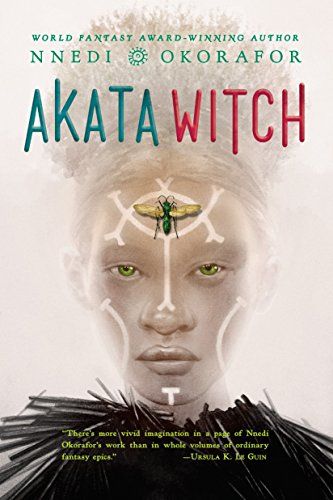
Akata Witch by Nnedi OkoraforNnedi Okorafor coined the terms “Africanfuturism” and “Africanjujuism” for her works. Akata Witch is an excellent example of the latter, and shows why her works that regularly win awards like the Hugo, Nebula, and Locus. The YA book tells the story of Sunny, a Nigerian transplant from New York who has albinism. She obviously struggles to fit in, but manages to befriend Orlu and Chichi and thus starts her journey into learning about the Leopard People and the group’s new task of hunting down a serial killer, the Black Hat Otokoto, a man who has been targeting children across Nigeria. It’s a deeply immersive story with a basis in a Nigerian magic system and beliefs, and if you or someone you know enjoys urban fantasy, this definitely deserves a spot on the shelf. |
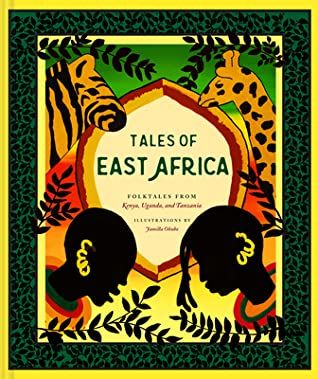
Tales of East Africa by Jamilla Okuba and Chronicle BooksIf you were looking for just the folktales without any added bits that may come with retellings, something that reads like it would have been told around a fire in years past, this is your book. Part of Chronicle Books’ Tales series, it collects 22 tales written down by folklorists and anthropologists in the 20th century as they visited Kenya, Uganda, and Tanzania. Accompanied by beautiful illustrations done by Jamilla Okuba, these stories have tricksters, monsters, magic, and morality, all while granting a better understanding of these diverse cultures. |
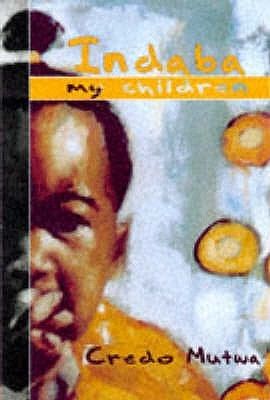
Indaba, My Children: African Folktales by Vusamazulu Credo MutwaThe full title of this book may include the phrase “African folktales” in it, but that’s because it truly tells African folktales, tracing them across the continent. Across 700 pages, it traces the evolution of Bantu folklore, from when the group first set out from North Africa, to the splits of the Nguni and Mambo people into South Africa. It doesn’t just cover the folktales, either. It branches out into the overarching culture of the people the stories came from, painting a complete picture of the peoples and history, essentially penning down centuries of oral history. It may not be a quick weekend read, but it is definitely a necessary read for anyone interested in African histories and cultures. |
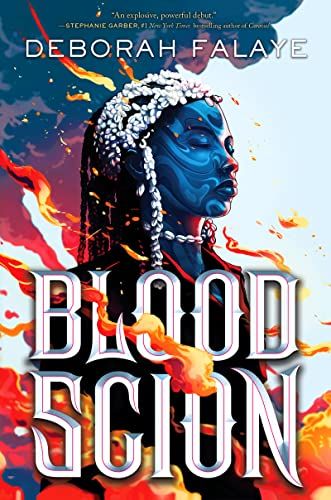
Blood Scion by Deborah FalayeDerived from Yoruba mythology, this book does deserve a bit of a content warning: it’s pretty violent. It’s not over the top in anyway, and not violent for the sake of being violent. It tells the story of Sloane, who must hide her identity as an Orisha descendant, as she is conscripted into the army of the people she must hide from. And some of her fellow soldiers were conscripted as children. It’s not going to be a pretty story, but it’s just as angry and heartbreaking as it needs to be. Sloane is pretty morally grey, doing what she needs to in order to survive, and reading it forces you to face the question of whether you would act any differently. It’s definitely not a feel-good read, but still enjoyable and a well-written fantasy if you’re looking for a new, darker read to pick up. |
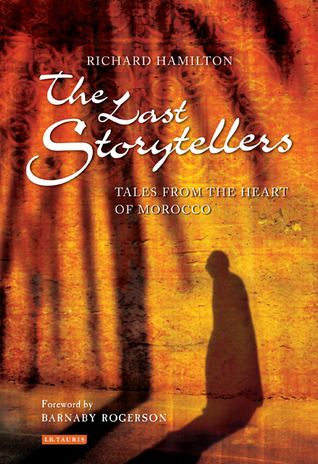
The Last Storytellers: Tales from the Heart of Morocco by Richard HamiltonMarrakech has a history of rich oral tradition, with storytellers gathering in the city center to recount ancient tales passed down for generations for any who will listen. But they’re losing the competition with modern entertainment and distractions, leading Hamilton to find the last storytellers and write down their stories to keep them from going into extinction. You can read those 37 stories here, as well as about the Marrakech storytelling tradition itself, with few embellishments made by Hamilton to make the stories be able to reach a wider audience, usually by adding a more modern turn of phrase. |

A Song of Wraiths and Ruin by Roseanne A. BrownDrawing from Western African mythology and aimed towards young adult readers, you can tell Brown did her research and loves the culture, taking time to world build in a beautiful way. It tells the story of Karina, a princess whose mother, the ruler, has been assassinated. Karina wants to resuscitate her, but the magic requires specific components. Components she can get during her country’s Solstasia festival, as long as she has the will to follow through. And if the open ending in this book leaves you wanting more, no worries. This book is part of a duology, with the second book A Psalm of Storms and Silence. |
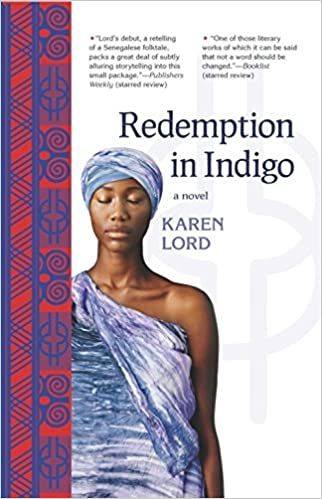
Redemption in Indigo by Karen LordThis is a very gently written book based around the Senegalese story “Ansige Karamba the Glutton.” It tells the story from the perspective of Karamba’s wife, Paama, adding more dimension to her that isn’t usually seen with supporting characters in folktales. Paama has run from her gluttonous husband, and some djombis have given her what is considered a chaos stick to provide aid. But one of the djombis used to have the power that is now contained by the stick and wants it back, and thus tests Paama with multiple life and death situations to show her that she doesn’t really want the power that the stick provides, that it is too much for her. Despite the trials being serious situations, the book still handles them lightly and doesn’t get too grim in storytelling. Truly a delight to read. |
If you’re still looking to learn more about African cultures, or read more about the mythology found in the cradle of humankind, I recommend trying some of the books on this African fantasy book list, or if you’re interested in a specific region, we have this list of the best Nigerian books to peruse.
Source : 8 Books About African Mythology From Around the Continent












